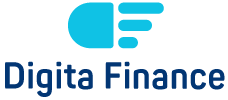Money management is experiencing a fundamental shift as programmable wallets emerge as the next evolution in personal finance. These sophisticated digital tools combine traditional budgeting principles with blockchain technology to create self-executing financial plans that operate without human intervention.
The concept moves beyond simple expense tracking applications. Programmable wallets function as autonomous financial managers that enforce spending rules, automatically save predetermined amounts, and execute complex budgeting strategies through smart contract protocols.
Understanding Programmable Wallet Technology
Programmable wallets represent a convergence of blockchain technology and personal finance management. Unlike conventional digital wallets that merely store and transfer funds, these advanced systems contain embedded logic that governs how money flows in and out of your accounts.
Smart contracts form the backbone of programmable wallet functionality. These self-executing contracts contain predetermined conditions that trigger specific financial actions. When certain criteria are met, the wallet automatically performs designated tasks without requiring manual input.
The technology operates on decentralized networks, ensuring that your financial rules cannot be altered or compromised by external parties. Once you establish spending parameters and savings goals, the wallet enforces these decisions regardless of emotional impulses or temporary financial pressures.
Blockchain integration provides transparency and immutability to your financial commitments. Every transaction and automated decision becomes part of an unchangeable record that maintains accountability to your original budgeting intentions.
Automated Budgeting Through Smart Contracts
Traditional budgeting relies heavily on willpower and manual discipline. Programmable wallets eliminate the human element that often leads to budget failures by automating adherence to predetermined financial plans.
These systems can instantly categorize incoming funds and distribute them according to your established budget percentages. The moment your salary arrives, the wallet automatically allocates specific amounts to housing, food, entertainment, and savings without any conscious decision-making required.
Spending restrictions become enforceable through code rather than self-discipline. If you’ve allocated $300 monthly for dining out, the wallet prevents any restaurant transactions once that limit is reached. This technological enforcement removes the temptation to overspend in weak moments.
The automation extends to investment strategies as well. Your programmable wallet can execute dollar-cost averaging by purchasing predetermined amounts of stocks or cryptocurrencies at regular intervals, regardless of market conditions or emotional responses to price fluctuations.
Customizable Financial Rules and Conditions
The true power of programmable wallets lies in their ability to implement sophisticated financial strategies tailored to individual circumstances and goals. Users can create complex conditional statements that govern money management decisions.
Emergency fund protocols can be programmed to automatically redirect additional income toward savings when the emergency fund falls below target levels. The wallet recognizes when financial priorities shift and adjusts spending allowances accordingly.
Debt repayment strategies become systematic and unavoidable. The wallet can prioritize high-interest debt payments while maintaining minimum payments across all obligations, implementing avalanche or snowball methods based on your preferences.
Seasonal spending adjustments can be coded into the system. Holiday shopping budgets might automatically increase in November and December while reducing entertainment allowances during those months to maintain overall financial balance.
For comprehensive insights into emerging financial technologies and their practical applications, Digitafin provides detailed analysis of how smart contracts are reshaping personal finance management.
Integration with Traditional Financial Systems
Programmable wallets don’t operate in isolation from existing financial infrastructure. These systems integrate with traditional banks, credit cards, and investment accounts to create a unified financial management ecosystem.
API connections allow programmable wallets to monitor account balances across multiple institutions and make real-time adjustments to spending permissions based on overall financial health. This holistic view prevents overspending in one category that might compromise other financial obligations.
Credit score optimization becomes automated through strategic payment timing and utilization management. The wallet can schedule payments on optimal dates to maximize positive credit reporting while maintaining cash flow for other expenses.
Tax planning integration allows the wallet to automatically set aside appropriate percentages for tax obligations based on income type and current tax brackets. This prevents the common problem of insufficient tax savings that plague many freelancers and business owners.
Security and Control in Programmable Finance
Security concerns naturally arise when discussing automated financial management systems. Programmable wallets address these concerns through multi-layered security protocols and user-controlled access permissions.
Private key management remains under complete user control. The wallet cannot access funds without proper cryptographic authorization, ensuring that automation never compromises ownership or control of assets.
Emergency override mechanisms allow users to temporarily suspend automated rules during genuine financial emergencies. These overrides require additional authentication steps to prevent casual rule-breaking while maintaining flexibility for legitimate needs.
Spending notifications and daily summaries keep users informed about all automated decisions. Transparency remains paramount even when automation handles routine financial tasks.
Regular audit trails provide detailed records of all automated transactions and rule executions. Users can review and analyze the effectiveness of their programmed financial strategies and make adjustments as circumstances change.
Real-World Applications and Use Cases
Programmable wallets excel in scenarios where consistent financial discipline yields significant long-term benefits. Retirement savings represent an ideal application where small, consistent contributions compound over decades.
College savings plans benefit tremendously from automation. Parents can program wallets to increase education savings contributions whenever household income rises, ensuring that improved financial circumstances directly benefit their children’s future educational opportunities.
Small business owners find programmable wallets particularly valuable for separating business and personal expenses while maintaining adequate tax reserves. The wallet can automatically categorize expenses and set aside appropriate tax percentages based on business income fluctuations.
Subscription management becomes effortless as the wallet tracks recurring charges and cancels services that exceed predetermined entertainment budgets. This prevents the common problem of forgotten subscriptions gradually draining monthly budgets.
Overcoming Implementation Challenges
Adopting programmable wallet technology requires careful consideration of personal financial patterns and realistic goal-setting. Many users initially create overly restrictive rules that lead to frustration and abandonment of the system.
Gradual implementation proves more successful than attempting comprehensive automation immediately. Starting with simple rules like automatic savings transfers allows users to build confidence before implementing more complex spending restrictions.
Financial education becomes crucial for maximizing programmable wallet benefits. Users must understand the implications of their programmed rules and how different scenarios might trigger unexpected consequences.
Integration complexity with existing financial tools can initially overwhelm users. Starting with one or two automated functions and gradually expanding capabilities leads to better long-term adoption and satisfaction.
The Evolution of Personal Finance Management
Programmable wallets represent a significant step toward fully automated personal finance management. As the technology matures, we can expect even more sophisticated capabilities that adapt to changing life circumstances automatically.
Machine learning integration will eventually allow wallets to optimize financial strategies based on spending patterns and goal achievement rates. The system will learn from successes and failures to continuously improve automated decision-making.
Social features may emerge that allow family members to coordinate financial goals through shared programmable wallet systems. Parents could automatically provide allowances to children while teaching budgeting principles through programmable restrictions.
Integration with broader smart home and IoT ecosystems could create comprehensive lifestyle automation where financial decisions integrate seamlessly with daily living patterns.
The future of budgeting lies not in more complex spreadsheets or detailed expense tracking, but in systems that remove human error and emotional decision-making from routine financial management. Programmable wallets offer a glimpse into a future where financial success becomes a matter of good initial planning rather than ongoing willpower and discipline.








What Is FinTech? A Beginner’s Guide to the Finteching 2025
Finance in the Metaverse: Will Virtual Economies Reshape Real-World Credit Scores?
AI in Wealth Management: How Artificial Intelligence is Reshaping Finance
AI-Powered Credit Scoring: Revolutionizing Digital Lending in the Digital Finance Era
Embedded Finance: How Seamless Financial Services Are Integrating into Everyday Apps
AI-Powered Credit Scoring: Revolutionizing Digital Lending in the Digital Finance Era
Harnessing AI in Digital Finance: Revolutionizing Risk Management and Customer Experience
How Open Banking APIs Are Revolutionizing Digital Finance?